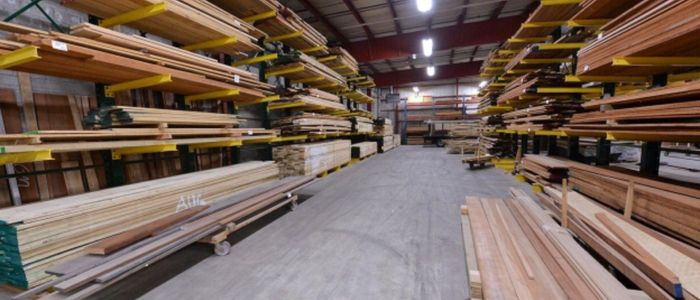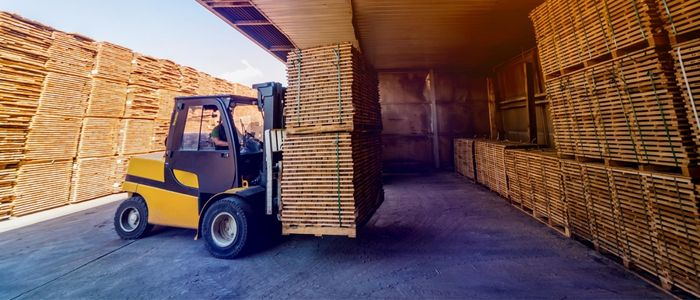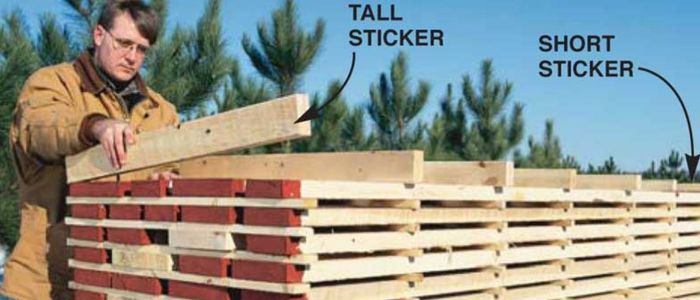Kiln-drying is a common practice for woodworkers and lumber dealers alike. Properly drying wood will help preserve its natural beauty, increase its durability, and reduce the risk of damage from warping or cracking. However, it can be challenging how to build a kiln for drying lumber if you are new to carpentry or have limited experience with construction projects.
If you are new to wood drying, it is also important to familiarize yourself with the various stages of drying and the associated risks and challenges that may arise. For example, you will need to be aware of issues such as mold growth, warping, and cracking during the process.
If you want to learn how to build your own kiln for drying wood, read more in this article for some helpful tips and guidance.

How To Build A Kiln For Drying Lumber
When building a kiln for drying lumber, several important factors exist. First, you will need to determine the size and capacity of your kiln based on the amount of lumber you wish to dry at once. Additionally, you will need to assess the types and grades of wood that you intend to use in your kiln, as well as the specific conditions required for achieving optimal drying results.
Once you have a plan in place, there are several materials and construction techniques that can be used to build your kiln. For example, you may want to consider using wood, metal, or concrete to construct the frame of your kiln, depending on your budget and available resources.
With careful planning and attention to detail, you can successfully build a high-quality kiln for drying lumber. Whether you are an amateur woodworker or a seasoned professional, there are many resources available to help guide your efforts and ensure that your project is a success.
Step-by-Step Process
Here we will discuss the essentials of kiln design and construction, including key materials and tools, as well as important safety considerations to keep in mind throughout the process.
1. Start by choosing a space where you can build your kiln that is large enough to accommodate all of its components. If possible, try to find a place that is already equipped with electricity and heating so you won’t need to run additional wires or plumbing.
2. Next, you will need to gather the necessary materials for building your kiln. Some of the key materials include treated lumber, insulation panels or spray-on foam, plywood or OSB panels for the walls and ceiling, tyvek or other vapor barriers for the sides and doors, wire mesh for the firing chamber, and sheet metal or wood to create a chimney.
3. Once you have your materials in place, start by cutting the lumber pieces according to your design plans. You will want to use only treated lumber that is rated to withstand high temperatures.
4. Once the lumber pieces are cut, start assembling the framework of your kiln using screws and waterproof glue. Make sure you have a strong and sturdy structure before adding insulation panels and vapor barriers as needed.
5. Next, you will need to create a firing chamber within your kiln. This can be done by attaching a wire mesh to the inside of your kiln, which will provide support for the wood as it dries.
6. Finally, you will need to create a chimney and ventilation system for your kiln using sheet metal or plywood panels, depending on your design plans. Once everything is in place, you can start slowly introducing wood into your kiln and monitoring the temperature and humidity levels to ensure a successful drying process.

Frequently Asked Questions
There is no definitive answer to this question, as many factors can influence whether or not it is feasible to build your own kiln for drying wood. Some of the key considerations include the complexity of the design and construction process, as well as your level of experience with carpentry and other building projects.
That said, if you are interested in building your own kiln for wood drying, several resources can help guide you through the process. These may include instructional guides, online tutorials, and expert advice from experienced carpentry professionals.
In order to build an effective kiln for wood drying, it is important to plan out the design and construction process in advance, ensuring that you have all of the necessary materials and tools on hand. You should also take steps to ensure safety by following all building codes and wearing protective gear as needed.
Ultimately, whether or not it is feasible for you to build your own kiln for drying wood will depend on your individual circumstances and experience. If you are willing to invest the necessary time and effort, however, it is definitely possible to create an effective kiln for drying lumber on your own.
What can you use instead of a kiln?
The most contemporary way to fire ceramics without a kiln is in a kitchen oven. It is obviously not a good option for firing ceramics on a bigger or commercial scale, but it is a good substitute for beginners or as a hobby.
One option is to use an insulated box with a wire-mesh floor. The box can be lined, wood or metal, and it doesn’t have to be waterproof as long as the insulation keeps out water vapor. Place your ceramic pieces on top of the wire grid, and fire away!
You will want to keep an eye on the temperature and have an accurate thermometer on hand. Ceramic will crack if fired at too high a heat, so you’ll want to keep track of the temperature. If you are unsure how much heat your ceramic can take, try firing it in stages.

How much does a small kiln cost?
Small tabletop kilns start at about $700 and go up to huge capacity kilns used by professional potters at about $15,000. Costs for a medium-sized top-loading kiln range from $2000 to $3000. Depending on the age and condition, used kilns can be purchased for a few hundred dollars.
Finding a used kiln can be tricky, though. It’s easier to find reasonably priced brand new tabletop kilns for less than $500, although tabletop kilns are often not as reliable or efficient at high temperatures as large kilns. If you’re serious about investing in your ceramic-making business and willing to spend the money on a full-fledged kiln, it’s worth the extra money to buy a top quality kiln.
What is a gas-fired kiln?
A gas-fired kiln is one that uses natural gas or propane as fuel. Gas kilns can be less expensive and easier to control than electrical ones because they fire at faster heating rates and with less power consumption. On the other hand, gas kilns are not as efficient and require more frequent cleaning because they have carbon build-up on the insulation walls. In order to control the temperature of a gas kiln, you must add or subtract gas from the burner in small amounts.
Do kilns use a lot of electricity?
The size and design of a kiln have a significant impact on its power requirements. Smaller kilns that use a 120-volt standard household outlet usually use 1.5 to 1.8 kilowatts of power, whereas a medium-sized kiln uses 5 to 8 kW. A large kiln can use up to 16 kW.
If you are concerned about your energy usage, it is a good idea to look for an electric ceramic kiln with a power-saving design or that uses alternative energy sources like solar power. Other considerations include using insulation materials and ventilated chambers to minimize heat loss, limiting the amount of time your kiln is turned on, and using temperature control devices like pyrometers to ensure that you are only using the power needed for a particular kiln firing.

Conclusion
Do you have any questions about how to build a kiln for drying lumber? We encourage you to explore this guide for everything you need to know about this process. From the materials and tools needed to the various steps involved in building your own kiln, this resource is a comprehensive guide that can help you get started. Check out our kiln articles on HeBei ShuoWei’s website and contact us for more guidance.

